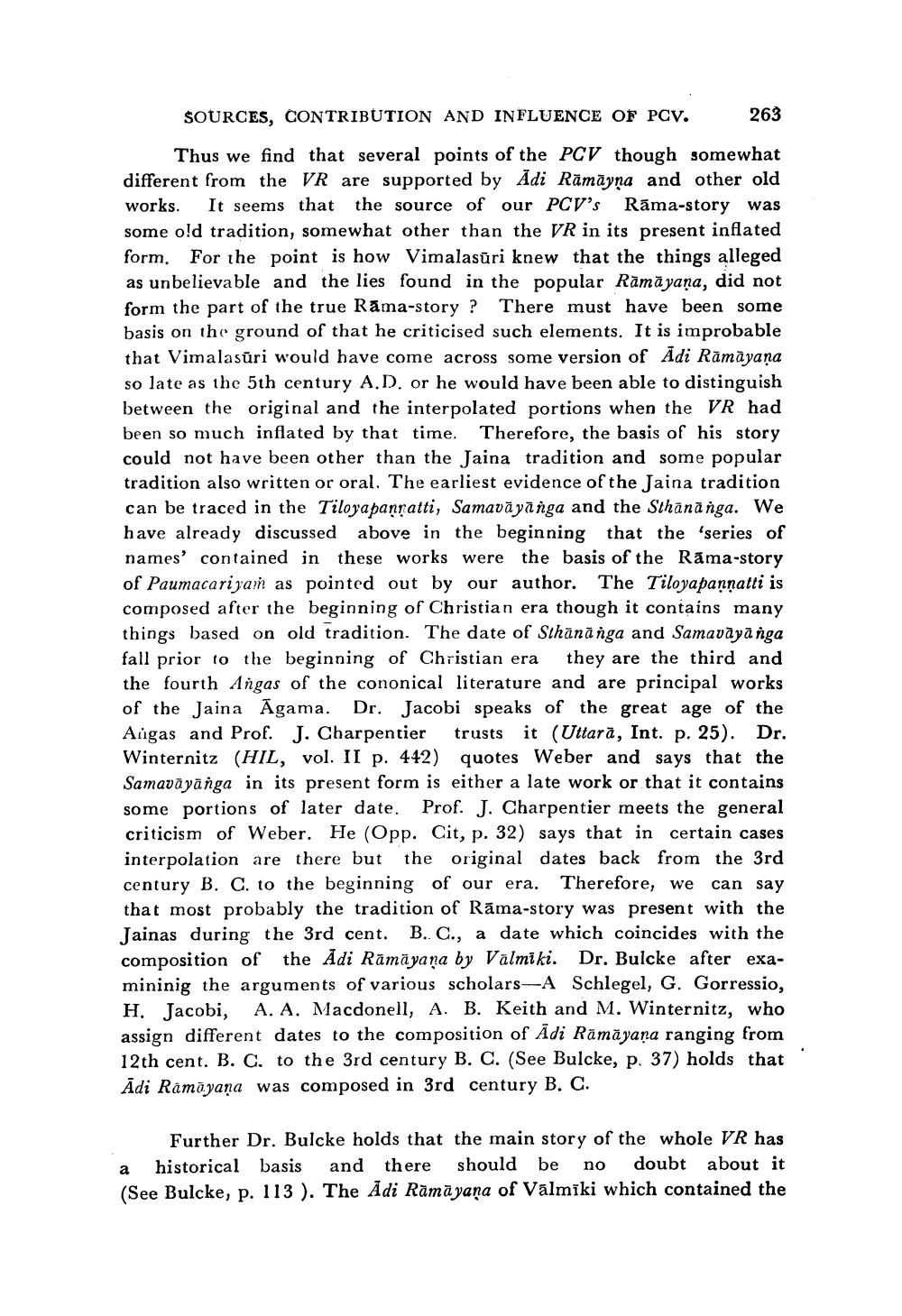________________
SOURCES, CONTRIBUTION AND INFLUENCE OF PCV.
263
Thus we find that several points of the PCV though somewhat different from the VR are supported by Adi Rāmāyna and other old works. It seems that the source of our PCV's Rāma-story was some old tradition, somewhat other than the VR in its present inflated form. For the point is how Vimalasūri knew that the things alleged as unbelievable and the lies found in the popular Rāmāyaṇa, did not form the part of the true Rāma-story? There must have been some basis on the ground of that he criticised such elements. It is improbable that Vimalasūri would have come across some version of Adi Rāmāyana so late as the 5th century A.D. or he would have been able to distinguish between the original and the interpolated portions when the VR had been so much inflated by that time. Therefore, the basis of his story could not have been other than the Jaina tradition and some popular tradition also written or oral. The earliest evidence of the Jaina tradition can be traced in the Tiloyapanratti, Samavāyānga and the Sthānānga. We have already discussed above in the beginning that the series of names' contained in these works were the basis of the Rama-story of Paumacari yan as pointed out by our author. The Tiloyapannatti is composed after the beginning of Christian era though it contains many things based on old tradition. The date of Sthānā nga and Samavāyā nga fall prior to the beginning of Christian era they are the third and the fourth Angas of the cononical literature and are principal works of the Jaina Āgama. Dr. Jacobi speaks of the great age of the Aigas and Prof. J. Charpentier trusts it (Uttarā, Int. p. 25). Dr. Winternitz (HIL, vol. II p. 442) quotes Weber and says that the Samavāyānga in its present form is either a late work or that it contains some portions of later date. Prof. J. Charpentier meets the general criticism of Weber. He (Opp. Cit, p. 32) says that in certain cases interpolation are there but the original dates back from the 3rd century B. C. to the beginning of our era. Therefore, we can say that most probably the tradition of Rāma-story was present with the Jainas during the 3rd cent. B.C., a date which coincides with the composition of the Adi Rāmāyaṇa by Valmiki. Dr. Bulcke after examininig the arguments of various scholars-A Schlegel, G. Gorressio, H. Jacobi, A. A. Macdonell, A. B. Keith and M. Winternitz, who assign different dates to the composition of Ādi Rāmāyaṇa ranging from 12th cent. B. C. to the 3rd century B. C. (See Bulcke, p. 37) holds that Adi Rāmāyana was composed in 3rd century B. C.
Further Dr. Bulcke holds that the main story of the whole VR has a historical basis and there should be no doubt about it (See Bulcke, p. 113 ). The Adi Rāmāyana of Valmiki which contained the




